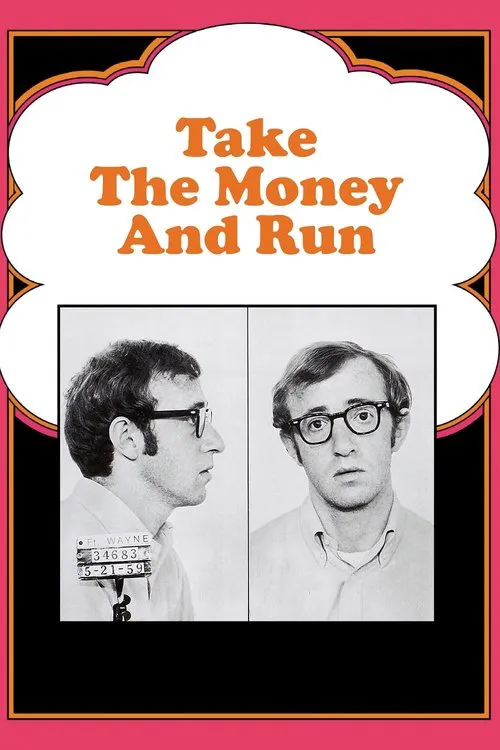Take the Money and Run

Plot
In 1969, Woody Allen's directorial debut took the comedy world by storm with the film 'Take the Money and Run,' a hilarious exploration of would-be bank robber Virgil Starkwell's bumbling adventures. Virgil is played by Allen himself, a lovable loser with a passion for becoming notorious. In pursuit of this goal, he sets his sights on robbing banks, but unfortunately for him, his ineptitude makes him a walking disaster waiting to happen. The film opens on Virgil sitting in a jail cell, where he narrates his story to a fellow inmate in search of a sympathetic listener. Through a series of flashbacks and a series of mishaps, we witness Virgil's hapless attempts at bank robbery. His first heist is a series of missteps from the beginning, as he accidentally shoots off his shoes, gets stuck in the bank's revolving door, and inadvertently triggers the security alarm. Undeterred by his failure, Virgil continues to plot his next move. He enlists the help of a dim-witted accomplice named Midge, played by Janet Margolin, who shares a boarding house with Virgil. Midge is a love interest for Virgil, but her naivety and innocence make her more of a hindrance than a help in his nefarious dealings. As Virgil's exploits continue, they become increasingly absurd and chaotic. He gets into a high-speed chase with the police, gets stuck in a narrow alleyway, and ends up running out of the bank with his pants down. Despite his incompetence, Virgil becomes something of a media sensation, with the newspapers dubbing him 'The Daring Bank Robber.' Virgil's infamy reaches a zenith when he gets caught by the police and becomes the subject of a mock hero's welcome upon his release from jail. His notoriety attracts the attention of the press, who are eager to feature him on their front pages. Virgil, basking in his newfound fame, begins to see himself as a mastermind, but the truth of his incompetence is only too apparent to those around him. One of the key aspects of 'Take the Money and Run' is its use of satire to poke fun at the notion of celebrity culture and the sensationalism of the press. Woody Allen's portrayal of the tabloid-obsessed media's obsession with Virgil's antics serves as a biting commentary on the way that the news is consumed and the way that fame can be manufactured. The film also marks a coming-of-age for Woody Allen as a writer and director, showcasing his unique brand of humor and wit. Allen's script is clever and incisive, with a sharp eye for detail and a knack for observing the absurdities of life. The film's success can be attributed in no small part to Allen's charismatic performance as Virgil Starkwell, a character that has become an iconic part of his oeuvre. 'Take the Money and Run' is more than just a comedy; it's a clever deconstruction of the American Dream and the notion of success. Virgil, despite his best efforts, fails miserably in his attempts to become a bank robber, and yet he achieves a kind of fame and notoriety that he could never have accomplished on his own merits. The film suggests that sometimes, even the most incompetent among us can stumble upon success due to circumstance rather than any inherent talent or skill. As the film draws to a close, Virgil is shown to be still sitting in his jail cell, looking back on his misadventures with a mix of amusement and disillusionment. It's a bittersweet ending, one that suggests that perhaps there's more to life than just trying to make a name for oneself as a notorious bank robber.
Reviews
Recommendations




